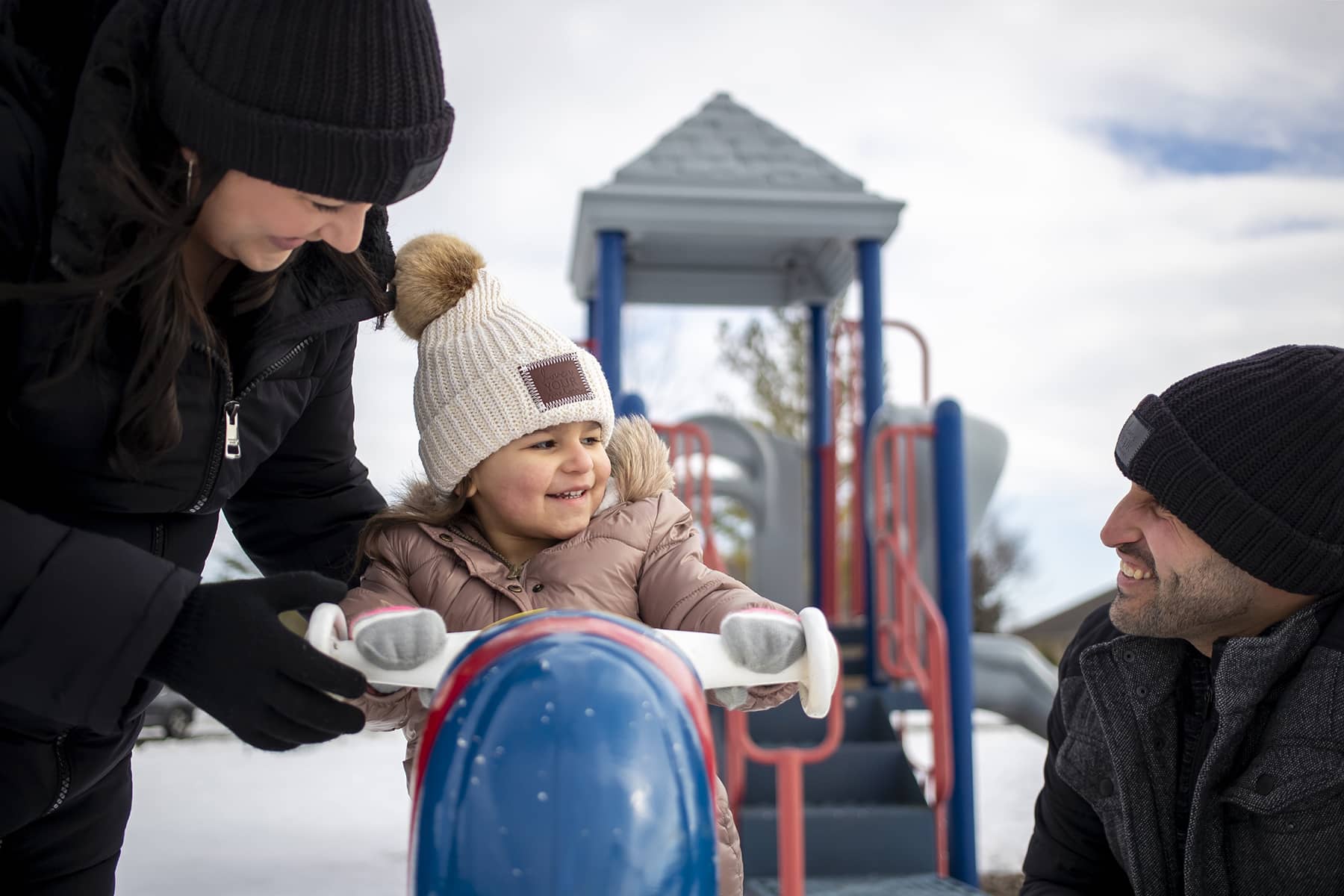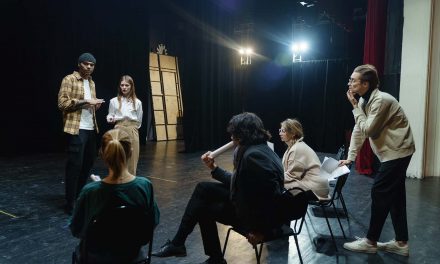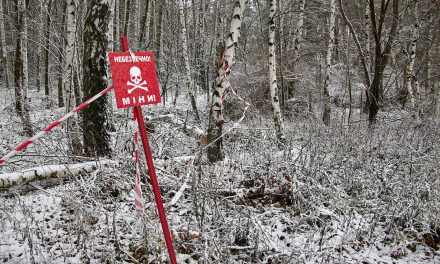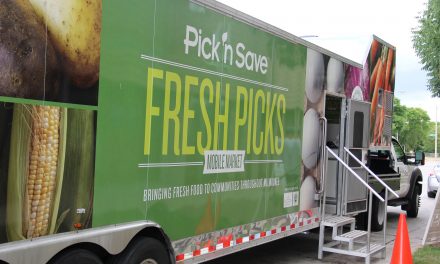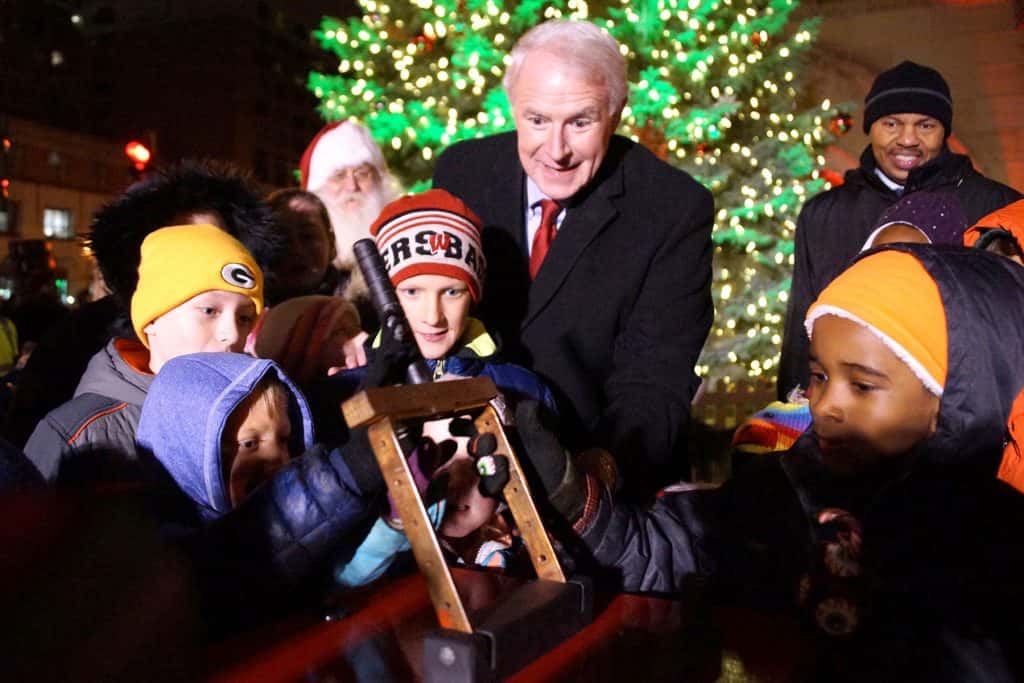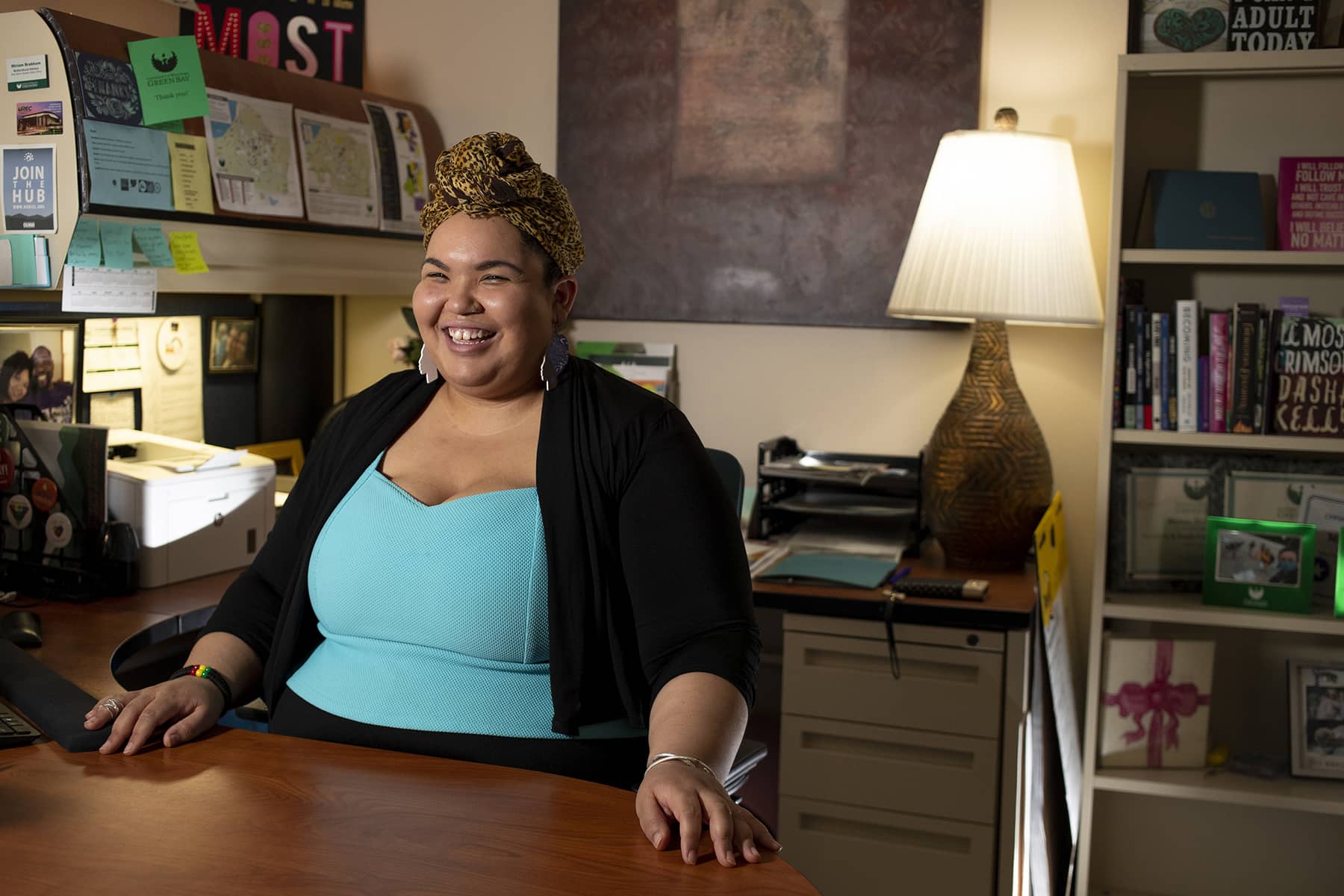
When she attended East High School in Green Bay, Wisconsin, Carina Abrego-Koch’s 10th grade social studies class was asked to stick a thumbtack into their family’s country of origin. Holding the single thumbtack in hand, Abrego-Koch looked from Mexico to Japan, conflicted.
Mexico was already studded with tacks. Japan stood in a world of blue without a single pin. After she placed her tack on the other side of the world, her peers had several questions, and her response was part of a repertoire she had perfected over the years.
“I am half Mexican, a quarter Japanese, an eighth Irish and an eighth Norwegian,” she told the class.
Growing up most of her life in Green Bay, Abrego-Koch was used to people asking her the question, “What are you?” It was enough that, even when a bully kicked her seat and tapped her shoulder with that persistent question, her teacher singled her out to share her ancestry with the class — rather than reprimanding the antagonizing teenager.
As a girl, she felt special among her classmates, but quietly, she longed to be part of a group. As a teenager, she had see a group of Hmong girls walking one way in the mall, a cluster of Mexican girls going the other way.
“I always felt like they looked at me like ‘Where do you fit in?’ ” Abrego-Koch said. “Native girls often asked me what tribe I was a part of. And, being lighter skinned, people also assumed I was White.”
It was not until she found the Hapa Project while scrolling through MySpace that she had the language to articulate why the question of “what” she was left her so bothered. The online project by artist Kip Fulbeck promotes awareness of being mixed race with a focus on Asian roots.
“I remember someone being interviewed for the Hapa Project responded with, ‘What am I? What about who am I?’ That was my first real exposure to anything outside of northeast Wisconsin,” Abrego-Koch said.
Hapa is the Hawaiian transliteration of the English word “half,” and the project’s tagline, “half Asian, 100% hapa” resonated with Abrego-Koch.
It likely would have come as a surprise to the young Abrego-Koch to learn that, over 20 years later, multiracial residents comprise Wisconsin’s fourth largest population group, accounting for about 6% of the state’s population.
The number of people who identified as multiracial in the U.S. census increased 245% statewide between 2010 and 2020. While this data illustrates the growth of interracial families, a larger part of the change is explained by the correction of a historical oversight: It wasn’t until the year 2000 that the Census Bureau allowed survey takers to list more than one race on the decennial survey. And it was only in 2020 that the census bureau attempted, with a revamped format, to accurately reflect the true diversity and complexity of race and ethnicity in America.
Northeastern Wisconsin mirrors the state’s multiracial population growth; the number of people who identified as multiracial in Brown, Outagamie and Winnebago counties rose 270%. In Green Bay, for instance, about 3,200 people identified as being of two or more races in the 2010 census. Ten years later, that number soared to over 11,300, or 11% of city residents.
Back in the ’90s, when Abrego-Koch gallivanted in malls as a teen, her parents’ options were only to list her race as Asian or “other race.” It’s no wonder she was given only one thumbtack.
Making sense of race from a Hispanic perspective
Jesús Smith moved to Appleton with his partner in 2017 after Lawrence University offered him a position as assistant professor of ethnic studies. Coming from El Paso, Texas, where 83% of the county is Hispanic or Latino, Smith found the difference in Appleton, where Hispanic and Latino representation is about 7%, “dramatic.”
Now settled in the area, he sees the diversity of the Fox Cities growing, whether that’s due to a burgeoning Black restaurant scene, the attraction of a relatively low cost of living, universities such as Lawrence pursuing scholars of color or more sobering factors like climate change, which are driving some people away from coastal cities.
In 2020, nearly 5,000 Appleton residents identified as multiracial. Smith, who is Afro-Latino, said that the U.S. census has, since the first population count in 1790, been based on artificial constructions of race.
In fact, the first census counted only free Whites, other free people and slaves. Other groups were added over the years in response to emancipation, immigration, racial theory and other factors.
Given that history, it shouldn’t be much of a surprise, Smith said, that the census only recently began to count multiracial people in a meaningful way.
“For so long, the census, a government-run agency, has forced people to identify in certain ways, and it would originally provide the categories and they would send out census enumerators to go determine what people’s race was, which, if you are multiracial, how does that even make sense?” Smith said.
Race and ethnicity are complex, and a set of boxes demarcating only a small handful of races can be confusing for many people of color, especially those who identify as Hispanic or Latino and, unlike the Census Bureau, see their ethnic group as a racial category, Smith said.
Hispanic or Latino people can be of any race according to the Census Bureau. It’s an ethnicity option on the census form that brings with it a whole spate of complications for Hispanic or Latino people who feel their race cannot be defined by the racial categories of White, Black, American Indian, Asian or Pacific Islander.
The updates to the census form have aimed to close the more pronounced historical gaps in understanding what it means to be multiracial and multiethnic. Smith said he could mark his race as Black and his ethnicity as Hispanic or Latino, and that, in his mind, accurately captures his heritage. But that does not mean it is not a disorienting process.
“A lot of people outside academia — and even in academia — don’t know how to make sense of these categories, where they’re coming from, why they’re around, what sense do they make, what’s their purpose,” Smith said.
In Wisconsin, 37% of those who identify as Hispanic or Latino marked themselves as “other race.” The second most common race category for Hispanic or Latino was “two or more races” at about 35%, followed by White at 23%.
But simply checking off the ethnicity box “Hispanic or Latino” erases myriad origins spanning the Western hemisphere. A person who has emigrated from Colombia won’t have the same cultural or social experiences as a Hispanic person from Mexico or a person who was born in Oshkosh. Someone who emigrated from Brazil will not even share the same language as someone from Puerto Rico.
Smith noted, too, that the designation from the U.S. Census doesn’t match the encounters of prejudice and discrimination faced by Hispanic people in the United States. Since the wave of immigration in the late 1800s, the U.S. government labeled recently arrived immigrants as all sorts of racial identities, which led people to put space between themselves and their established race.
The Census Bureau’s road to identifying Hispanic as an ethnicity was long and winding. It wasn’t until the 1930 census that Hispanic people could select “Mexican” instead of White, an option that underscored, at best, the country’s lack of understanding, and at worst, the country’s dismissal of a marginalized population group.
It would take another 40 years, and the Civil Rights movement, for the White House to push the Secretary of Commerce to create subcategories for Hispanic identification, which ranged from Mexican, Puerto Rican, Cuban, Central or South American, or “Other Spanish.” They also created another option, “No, none of these.”
By 1990, a write-in response for Hispanic people was introduced. By 2010, the U.S. Census introduced the concept of Hispanic as an ethnicity that is still used today.
“Just because folks might be understood to be of a different racial group doesn’t mean they see themselves as that, and it wasn’t unheard of for many immigrants to distance themselves from other immigrants in the country, or for Latinos to distance themselves from other Latinos if they felt they were not engaging with the country in a certain way,” Smith said.
‘I felt like an anomaly’
Abrego-Koch’s maternal grandfather, Roland Meltesen, met her grandmother, Fumiko Yamaguchi, when he was stationed in Japan after World War II. Meanwhile, her paternal grandfather Gustavo Abrego gained U.S. citizenship after joining the U.S. Army during that war.
Despite only meeting one of her four grandparents, Abrego-Koch said there was something magical about both her grandfathers serving in the war and ending up in Kenosha, where her parents met.
When she thinks of her Mexican father and half-Japanese mother coming together, she believes they must have felt a connection for being different.
In 1987, the Abrego-Koch family made the life-changing decision to move to Green Bay. The inciting incident occurred when Abrego-Koch’s older brother came home bruised and bloody, having been mugged and thrown in a dumpster. He was in seventh grade.
Abrego-Koch didn’t start thinking about herself as tri-racial until her late teens or early twenties. A true ‘90s teenager, she grew up without the influence of the internet, relying on TV and other media for views of the world outside Wisconsin.
“In northeast Wisconsin, there’s not many people who look like me, especially back then. People like me weren’t represented on TV. I felt like an anomaly,” Abrego-Koch said.
When she was 17, Abrego-Koch had only one option for race when she was filling out her driver’s license information in 1998. She listed herself as Hispanic. But assuming this identity didn’t go as smoothly for her brother, who turned down the U. S. Air Force’s Hispanic Airman of the Year award because he didn’t think he deserved to take up that space.
“He didn’t feel he had the journey that allowed him to be recognized as Hispanic,” Abrego-Koch said, her voice cracking. “We’ve lived in the country longer, we’re middle class. For me, I have never felt Mexican enough. I don’t feel Japanese enough. I don’t feel White.”
It is a feeling that Miriam Brabham, 31, of Green Bay, also has encountered. For her, the complication of being multiethnic is bound up in her black curls.
Brabham, the daughter of a Black father and a White mother of Italian and Irish origin, followed her boyfriend to Green Bay three years ago. While she adores summers at Bay Beach and the uniquely warm and welcoming community, she has had to travel as far away as Chicago to get her hair braided.
Growing up with a White mother who didn’t have the knowledge to treat her black hair, she internalized ideas about her hair. Its dryness, a factor of using the wrong products, amounted to people calling her hair as dry as a broom. Its knotted curls, a result of her hair not being properly wrapped at night, led to people saying she had a rat’s nest.
“I have a lot of trauma wrapped up in these curls,” she said.
When knowledge of everyday upkeep like hair isn’t passed down, Brabham said, even things like hair care can be triggering. It echoes Abrego-Koch’s feeling of wholeness, something Brabham said she struggled with growing up.
“People would assume the food I liked or the music I listened to was part of my White side. If I talked a certain way, that was my Black side,” Brabham said. “Putting people into a dimension outside their humanity is something a lot of biracial people struggle with. I can’t just be a Black kid who likes comic books. My love of comic books must, somehow, be attributed to my heritage.”
Having a love of Ella Fitzgerald’s music, the dulcet sounds of Dean Martin and Shakespeare, she, too, received the quizzical nods of others followed by the question: What are you?
It’s one of the many reasons Brabham works for University of Wisconsin-Green Bay’s Multiethnic Student Affairs Office, also known as MESA. As the multicultural student success manager, she knows first-hand what it is to possess multiple points of ancestry and heritage.
“There was a lot of confusion over how I was supposed to be identifying. And there was a need to make sure everybody knew what I was at all times,” Brabham said. “I move through the world as a woman of color. People may not know what color that is, they may not readily be able to identify it. But I have never been mistaken for a White woman.”
Growth of multiracial families
Evelyn Gonzalez, 3, blinked her eyes open a year before the pandemic shut the world down. Before her parents knew it, her babble had pops of Spanish as she described her favorite yellow pants as amarillo, the azule sky and exclaimed sorpresa at whim.
“This little stinker, just from watching videos, taught herself Spanish,” Jennifer Gonzalez, Evelyn’s mom, said.
Jennifer and Mario Gonzalez, Evelyn’s parents, are White and Hispanic, respectively. Evelyn doesn’t yet see race, but her parents expect that soon, she will start asking questions about her last name and what makes her, in all her big wavy hair and olive skin, distinct from her classmates.
And they will make sure she knows that who she is is worth celebrating.
“If she’s proud of who she is, it almost becomes easier to manage because there is that internal confidence of ‘This is me. My darker features, my last name. This is me,’ ” Mario said. “Even if you live somewhere where people don’t accept or want you, having that self-love goes a long way.”
Evelyn’s parents are one of the many couples who are happily mixing across races and ethnicities. And when they note Evelyn’s race on the next decennial survey, they will be sure to check “White” and “Other Race.”
Abrego-Koch, who married a White man with whom she has three children, isn’t 100% sure of how she should count her children. While Abrego-Koch is only a quarter White, her children are three-fourths white.
She thinks of her own hesitations with forms, with origins, and how few options there were for her to correctly count herself. She marks her three children, aged 8, 6, and 19 months, multiple races, but the question made her utter a sound of genuine uncertainty.
Smith, of Lawrence University, said that as the world becomes more multiethnic, the concept of being “White” will look more complex, whether that’s the result of people embracing more elements of their heritage or the result of interracial cohabitation.
While Abrego-Koch isn’t clear on how her children will identify in the future, she knows they are entering an era that embraces multiracial representation.
“Green Bay has changed a lot, whether Green Bay likes it or not,” Abrego-Koch said. “Green Bay is at a crossroads, with great organizations like Casa ALBA Melanie and We All Rise. We all came here for a better life and we want to keep Green Bay a good place to live.”
Natalie Eilbert
Samantha Madar
Originally published by wisconsinwatch.org
The nonprofit Wisconsin Center for Investigative Journalism collaborates with Wisconsin Public Radio, Wisconsin Public Television, other news media and the UW-Madison School of Journalism and Mass Communication. All works created, published, posted or disseminated by the Center do not necessarily reflect the views or opinions of UW-Madison or any of its affiliates.

